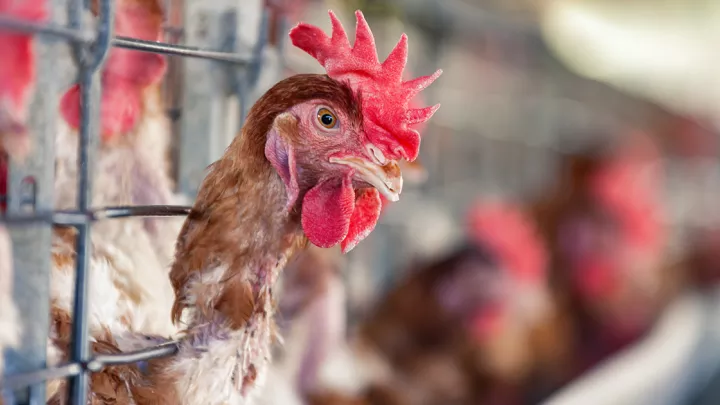Should we be worried about bird flu?

A dangerous strain of bird flu is behaving in unprecedented ways, spreading through dairy cattle and showing signs of increased adaptation to mammals. The virus's evolution has health experts concerned about pandemic potential.
A new threat emerges
The H5N1 virus has circulated in birds for three decades, but recent developments are raising red flags. "What we've seen over the last couple of years is a new clade or flavor of H5N1 that's been circulating and really dominating the avian influenza landscape," explains infectious diseases physician James Lawler, MD. This new variant is doing something unprecedented: infecting mammals at scale and spreading between them.
From birds to cows to pigs
The virus has established itself in U.S. dairy herds. Last spring, the Food and Drug Administration detected viral genetic material in one in five milk samples of pasteurized milk at grocery stores across the country. While pasteurization kills the virus, making commercial dairy products safe, the situation presents new risks for virus evolution.
In a concerning development, H5N1 has now been detected in pigs in Oregon. "It appears that this virus probably came directly from birds and not from dairy cows," Dr. Lawler says. "We know that viruses that transmit in pigs often have the capability to transmit more effectively in humans."
Why this matters
What makes H5N1 particularly concerning is humans' lack of immunity. "An H5 virus has not been seen as a seasonal influenza virus in humans as far back as we know in history," Dr. Lawler says. "That means humans are likely especially vulnerable to this virus."
Historically, detected H5N1 infections in humans have had a 50% fatality rate, though this likely overestimates severity by missing milder cases. Recent infections in dairy workers have been mild, but a teenager in British Columbia recently became critically ill, demonstrating the virus's continued potential for severe disease.
Warning signs
Experts are watching for sustained human-to-human transmission – the final step before a potential pandemic. "Once you get to sustained human-to-human transmission, you're essentially in the pandemic – there's no off-ramp at that point," Dr. Lawler cautions.
Several unexplained cases are already causing concern among epidemiologists. “We have a couple of cases in Missouri that we can’t explain. We have a teenager in British Columbia who was critically ill that we can’t explain. We have a kid in California that we can’t explain,” Dr. Lawler says. “That starts to be a concerning pattern, because when you can’t find a source that you can easily attribute it to, you have to think it might have come from other people.”
Protecting yourself
While there's no cause for panic, several precautions make sense:
Avoid unpasteurized dairy products.
Get tested if you develop flu-like symptoms.
Stay home when sick, especially with fever and cough.
Get your seasonal flu vaccine.
Support improved ventilation in schools and workplaces.
The coming flu season may complicate surveillance efforts. As Dr. Lawler explains, "We're going to see tons of cases of flu over the next several months, and it's going to become even harder to differentiate where there may be cases that are actually H5."
Staying informed
Dr. Lawler recommends consulting academic medical center websites, such as the UNMC Global Center for Health Security's Transmission page, for reliable updates on the situation. "Your local academic medical center is in tune with your community," he says.
Public health officials are expanding monitoring efforts, with the USDA implementing new bulk milk testing programs. But Dr. Lawler emphasizes the importance of remaining vigilant: "I do worry that because most of these infections have been mild, that people will relax and become complacent. And I think that's the wrong answer."
The situation bears watching, but panic isn't warranted. The key is staying informed and taking sensible precautions while public health experts track the virus's evolution.





